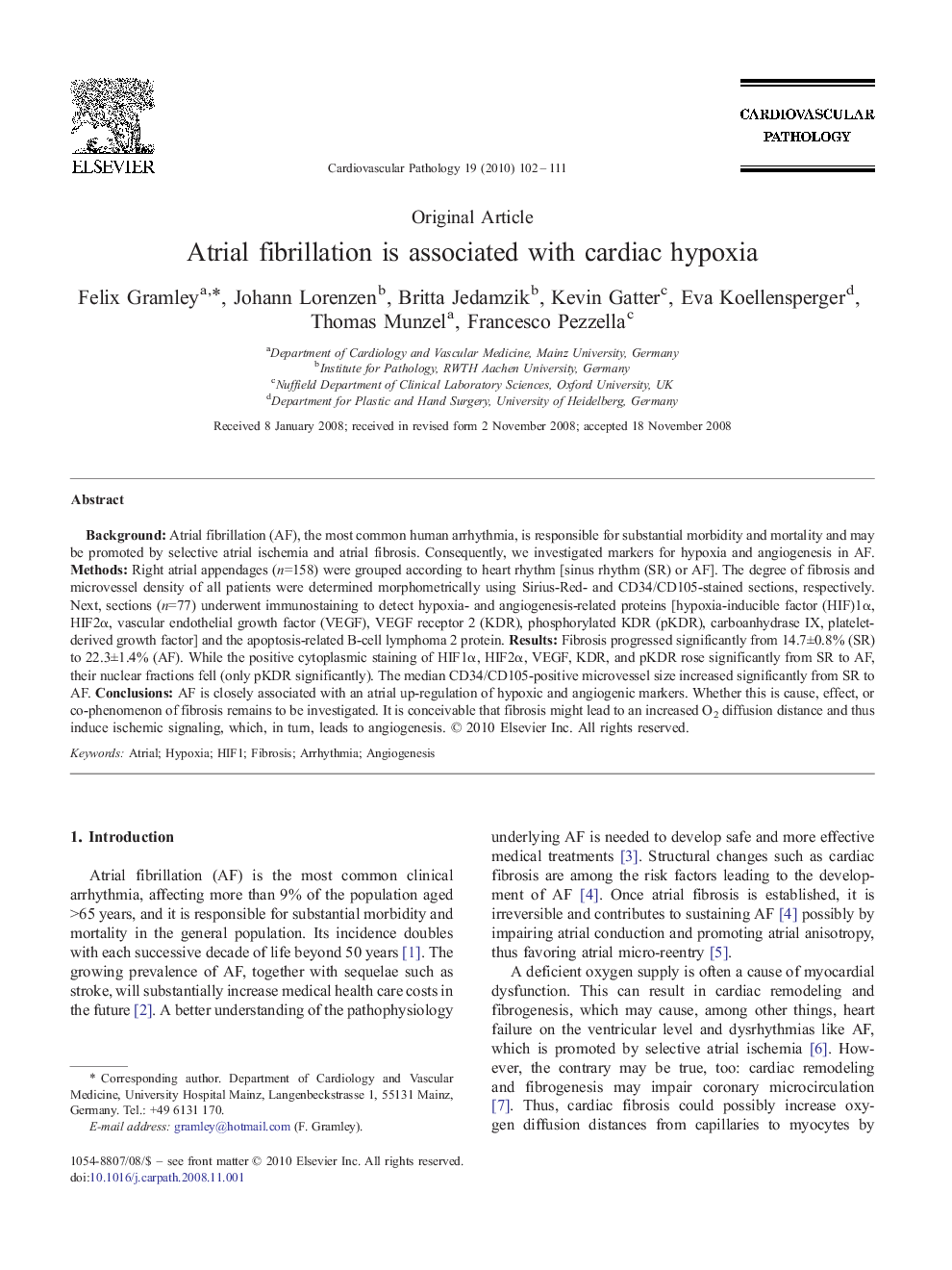| Article ID | Journal | Published Year | Pages | File Type |
|---|---|---|---|---|
| 2899383 | Cardiovascular Pathology | 2010 | 10 Pages |
BackgroundAtrial fibrillation (AF), the most common human arrhythmia, is responsible for substantial morbidity and mortality and may be promoted by selective atrial ischemia and atrial fibrosis. Consequently, we investigated markers for hypoxia and angiogenesis in AF.MethodsRight atrial appendages (n=158) were grouped according to heart rhythm [sinus rhythm (SR) or AF]. The degree of fibrosis and microvessel density of all patients were determined morphometrically using Sirius-Red- and CD34/CD105-stained sections, respectively. Next, sections (n=77) underwent immunostaining to detect hypoxia- and angiogenesis-related proteins [hypoxia-inducible factor (HIF)1α, HIF2α, vascular endothelial growth factor (VEGF), VEGF receptor 2 (KDR), phosphorylated KDR (pKDR), carboanhydrase IX, platelet-derived growth factor] and the apoptosis-related B-cell lymphoma 2 protein.ResultsFibrosis progressed significantly from 14.7±0.8% (SR) to 22.3±1.4% (AF). While the positive cytoplasmic staining of HIF1α, HIF2α, VEGF, KDR, and pKDR rose significantly from SR to AF, their nuclear fractions fell (only pKDR significantly). The median CD34/CD105-positive microvessel size increased significantly from SR to AF.ConclusionsAF is closely associated with an atrial up-regulation of hypoxic and angiogenic markers. Whether this is cause, effect, or co-phenomenon of fibrosis remains to be investigated. It is conceivable that fibrosis might lead to an increased O2 diffusion distance and thus induce ischemic signaling, which, in turn, leads to angiogenesis.
